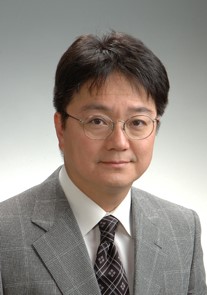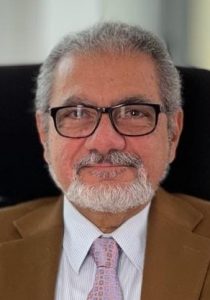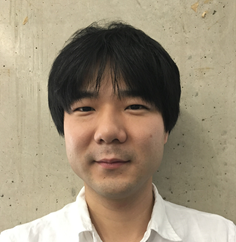Keynotes
Keynote title:
Onga river IoT project by Nogata city – remote monitor of water level and control of sluice gates –
Authors: Masayoshi Ohashi, Makoto Kinoshita and Ryuji Yonezawa
Affiliation: Fukuoka University, Advantech Technologies Japan Corp., Nogata City
Abstract
Onga river is one of the big rivers (first-class river) in Kyusyu Island. Since there have been a number of floorings due to heavy rains, it is important issue for Nogata city to keep people and city area safe. With this reason, many sluice gates are placed in Nogata city. So far, monitoring of water level and open/close control of the gates during a heavy rain have been conducted by appointed citizens. However, they are mostly elderly, so that those works become burden and may even become dangerous. In order to overcome those difficulties, Nogata city started to develop IoT solution, remote monitoring of water level by sensors and remote controlling of sluice gates by electric motors. Fukuoka University and Advantec Technologies Japan have been Jointly involved this project and several field trials have been conducted. In this talk, we introduce the outline of the project and report the result. Though the trial is still an experiment level, we believe it will contribute the safety of city and people in Nogata.
Keynote Presenter:
 Prof. Masayoshi Ohashi
Prof. Masayoshi Ohashi
He received B.S., M.S. and Ph.D. degree in Engineering from Kyoto University in 1981, 1983 and 1994, respectively. He joined KDD (currently KDDI Corporation) in 1983. Since then, at KDDI R&D Labs., he was engaged in mobile satellite communications, coding theory and 3rd generation mobile communications. In the early 2000s, he was involved in 3G standardization work and national ubiquitous/sensor networking projects. From 2008 to 2013, he was a Director of Media Information Science Laboratories, followed by a Director of Adaptive Communication Research Laboratories in ATR. From 2013, he is a Professor, Department of Electronics Engineering and Computer science, Faculty of Engineering at Fukuoka University. He is a senior member of IEEE, a fellow of IEICE and a senior member of IPSJ.
Keynotes

Prof.Gamal Fahmi
Gamal Fahmy received the B.Sc. and M.Sc. degrees from Assiut University, Assiut, Egypt, in 1996 and 1998, respectively, and the Ph.D. degree in electrical engineering from Arizona State University, Tempe, USA in 2003.
From 2003 to 2005, he was a Research Assistant Professor with West Virginia University, where he worked on several Biometric identification and recognition projects, from 2006 to 2012 we was with the German University in Cairo and an annual summer Senior Researcher at the Institute of Image and Computer Vision at RWTH Aachen, Germany.
Dr Fahmy won the Egypt National State award in Engineering Sciences 2012-2013. His research interests include image super-resolution, Computer vision, biometric identification and image forensics. Dr. Fahmy was an alexander von Humboldt research fellow at Bochum Universitat, Germany, in summer 2015 and 2018 and at Fraunhofer HHI institute Berlin, Germany in 2019. He is currently a full professor at the Electrical Engineering Department, Assiut University, Egypt.
Title:Micro Movement of Facial Muscles in Video Signals for different applications
Abstract:
Magnifying micro movements from natural videos has recently been investigated by several computer vision researchers, due to its impact in numerous applications. In this paper we present how to detect these micro movements in natural face videos using basic band pass filtering. Face expression detection and its consequent analysis have been investigated intensively during the last couple of decades. This is due to its impact in different medical diagnose, security related and psychological applications. However most of the recent literatures work in facial expression detection relied on detecting clear visible facial expressions from images or video signals that required a user friendly environment. In this work we try to detect micro-expression in facial video signals where the face is completely posed (fixed) and change is undetected by basic vision. We analyze face videos and magnify any minor motion type that may exist and display it as a sinusoidal wave. These facial analyses will not only reveal hidden micro facial expressions, but it can also spot different facial muscle malfunctions, surgery spots or plastic surgery abnormalities.
Prof.Julian Webber

Julian Webber received the Meng and PhD degree from Bristol University in 1996 and 2004 respectively. He undertook Post-doc research on Wireless Communications at Bristol University and later Hokkaido University from 2007-2012. From 2012-18 he was with the Advanced Telecommunications Research Institute (ATR) in Kyoto, Japan working on satellite and wireless LAN technologies. He is currently a specially appointed Assistant Professor at Osaka University working on mm-wave and terahertz communications.
Title: Terahertz Band Communications: New Trends, Applications and Challenges
Abstract
Wireless systems are required to transport ever higher data-rates within the constraints of a finite and limited bandwidth. The terahertz band from 0.1 THz to 10 THz contains a huge amount of unlicensed spectrum that can be exploited for high capacity short and long-range communications. The low THz band is expected to be a part of the future sixth generation communications systems expected around 2030 for which research is well underway. This talk will discuss the new trends including state-of-the-art THz materials and devices including photonic crystals, valley photonic crystals and resonant-tunnelling diodes. Demonstrations of real-world applications such as real-time 4K, 8K wireless transmission and radio-over-fiber will be shown. Recent novel THz applications such as imaging will also be presented. The technical, economic, practical and competitive challenges to be overcome before the widespread take-up of the technology will also be discussed.
Dr. Ahmed N. Tantawy

Dr. Ahmed N. Tantawy is a Senior Advisor specializing in the strategic development, planning, and management of complex technology-fueled initiatives and ecosystems. His fact-based analysis benefits from his focused approach, creative thinking, multidimensional experience, and interpersonal skills.Over the past eight years, Dr. Tantawy worked with international organizations, multinational corporations, and government agencies.His engagements include serving as the founding leader of the Applied Innovation Center in Egypt, a principal investment advisor at a venture capital fund operating in the US and the Middle East, a senior advisor to four cabinet ministers, and a board member of various national-scale initiatives in the Middle East. He also served on the Board of Directors of an international telecom operator, the Board of Directors of the Egyptian National Telecommunications Regulatory Authority, and the Executive Committee for the Development of the Suez Canal Region. In industry, Dr. Tantawy held several technical and executive positions at IBM. Corporation from 1988 to 2013. He was Chief Technical Officer and Senior Executive Consultant in the Growth Markets Region (2008-2013), overseeing mega-projects in Central and Eastern Europe, Central and South America, and all of Africa, Asia, and Australasia. He managed hardware and software products and solutions development labs in the US, UK, Germany, Italy, Japan, Brazil, and Egypt (1996-2008). He built and led the largest Software Services Lab and a Professional Services Delivery Hub, outsourcing services to IBM units and clients across the world (2000-2008). Dr. Tantawy was the CTO of IBM’s Internet Division (1998-2000) and the Global Technical Director of Digital Media in the Telecom and Media Industry Solutions
Division (1996-1998). From 1988 to 1995, he was a Research Scientist and Department Manager at the IBM Thomas J. Watson Research Center in New York. Between 1980 and 1988, Dr. Tantawy was a University Professor and an independent advanced technology consultant in the USA, France, and Saudi Arabia. He maintained his involvement
in the academic world, serving on Boards of Trustees and Advisory Committees of a number of universities and research institutes in the USA, Europe, and the Middle East. He also held special oversight assignments with the US National Academy of Sciences.The scientific contributions of Dr. Tantawy include 34 inventions, 18 issued patents, 4 books, 1 book chapter, and over 100 refereed papers published in reputable journals and international conferences. He also served as the Editor-in-Chief of a book series, an Editor of 4 scientific journals, and the General Chair of 14 international IEEE, ACM, and IFIP conferences. His technical interests and practical experience cover a large spectrum: Architecture and Design of Complex Systems, High Performance Networks, Information Privacy, Data Security,Artificial Intelligence Applications in Education and Healthcare, Embedded Systems, Smart
and Secure Cities and Buildings, Factory Floor Automation, Nanotechnology Applications,Digital Transformation Strategies, and Tech-fueled Socio-Economic Growth. Dr. Tantawy received his Ph.D. in Computer Engineering with highest honors from Grenoble, France in 1980. He earned his B.Eng. and M.Sc. degrees in Electrical and Computer
Engineering with distinction and highest honors from Alexandria University, Egypt. He also
received advanced education in technology management and corporate leadership at IBM
(1993-2006), Harvard (1995) and MIT (1999 and 2012).
Abstract.
“Developing a High Impact Research and Innovation Strategy for Africa”
The African population of 1.4 billion is growing at an annual rate of around 2.5%. Its median age is 19.7 years, with 41% of Africans being under the age of 15. Despite its huge human resources and economic potential, Africa is below the world average according to many global development indices and indicators. This anomaly can be overturned if the continent’s human capital is properly groomed through education and rendered most fruitful through innovation, applied in ways that truly matter to its various communities.
In order to seize the opportunities that the changing world presents today, Information and Communications Technologies (ICT) seem to be the obvious choice for African nations to focus on. Furthermore, national growth strategies need to look at ICT not only as essential tools that ought to be used intensively and optimally but also as the basis for developing lucrative products through solid innovation ecosystems.
This keynote presentation does not give definitive, detailed plans for Africa to achieve its ambitious objectives. Using an interactive approach, it attempts to spark a focused, pragmatic, strategic thinking process that could produce such plans. First, the presentation highlights the global trends in ICT research and development, business dynamics, and job market evolution. Then, a high-level assessment of the situation in Africa is used to identify the areas of interest that are most promising for its economies and youth. In an attempt to kick off the formulation of successful strategies, a couple of African and global experiences are presented and used as a basis for defining some of the key ingredients needed in the development and implementation of high-impact national growth initiatives. Last, some known execution challenges are addressed, including the notorious difficulty of coordinating an effective tripartite collaboration among academia, industry, and government.
Title: A Novel Virtualization of IoT Infrastructure and its Use Cases
Speaker: Dr. Kenji Kanai

Abstract:
Currently, Internet of Things (IoT) has been not only collecting interest in academia but also applied in business areas. IoT technologies are expected to contribute to accelerating development of smart cities, while smart city application developers and providers require to simplify IoT application development and support large scale IoT deployment for reduction of expenditure and longer sustainability. In order to address this demand, the speaker tackles the research project named “Fed4IoT” which is a Research and Innovation Action jointly funded by the European Commission and Japan’s Ministry of Internal Affairs and Communications (MIC). Fed4IoT aims at realizing the federation of IoT and cloud infrastructures to provide scalable and interoperable smart city applications. In this talk, we introduce a novel virtualization technology of IoT infrastructure, namely VirIoT, and demonstrate the deployment of cross-border smart city applications on VirIoT platform.
Kenji Kanai received the B.E., M.E. and Ph.D. degrees from Waseda University, Tokyo, Japan, in 2010, 2012 and 2015, respectively. He was an assistant professor at Waseda University until 2017, and currently a junior researcher at Waseda Research Institute for Science and Engineering. His research interests include Internet of Things (IoT), IoT application, platform and system, network virtualizations and information centric networking.
“Principles of Coupled Defected Ground Structures Resonators and Its Applications in Wireless Power Transfer”
Prof. Adel B. Abdel-Rahman

Adel B. Abdel-Rahman is currently a Professor at the Department of Electronics and Communications
Engineering, Egypt-Japan University of Science and Technology, Alexandria, Egypt. He received his B.S. and M.S. in Electrical Engineering, Communication, and Electronics from Assiut University, Egypt, and his Dr.-Ing. degree in Communication Engineering from Otto von Guericke University, Germany in 2005. Since October 2006, he has been an Assistant Professor at the Electrical Engineering Department, South Valley University, Qena, Egypt. He has published more than 120 refereed journal and conference papers and has two patents. He was the Executive Director for Information and Communication Technology, South Valley University, from 2010-2012. Since October 2012, he joined the School of Electronics, Communications and Computer Engineering, Egypt-Japan University of Science and Technology (E-JUST), Alexandria, Egypt, and has been the Dean of the Faculty of Computers and Information, South Valley University from 2016-2018. His research interests include the design and analysis of antennas, filters, millimeter-wave devices, WPT, and metamaterials and their application in wireless communication, as well as optimization techniques with applications to microwave devices and antenna arrays.
ABSTRACT
This presentation introduces new low profile designs for the near-field wireless power transfer (WPT) structures using different defected ground structures (DGS) resonators and compact interlaced resonators. Most of the near-field WPT systems depend upon the magnetic resonant coupling (MRC) using 3-D wire loops, or helical antennas which are often bulky. This, in turn, poses technical difficulties in using these WPT systems in the design of small size electronic devices and biomedical implants. The use of DGS enables to transfer power wirelessly with low profile structures and with high efficiency of power transmission. The contributions that will be presented are considered an evolution in this area by using the defected ground structures (DGSs) as building blocks for WPT system. Design procedures for the DGS for WPT will be presented. The presentation will also include the main contributions in our published book:
Hekal, S., Allam, A., Abdel-Rahman, A.B., Pokharel, R.K., “Compact Size Wireless Power Transfer Using Defected Ground Structures,” Springer, 2019